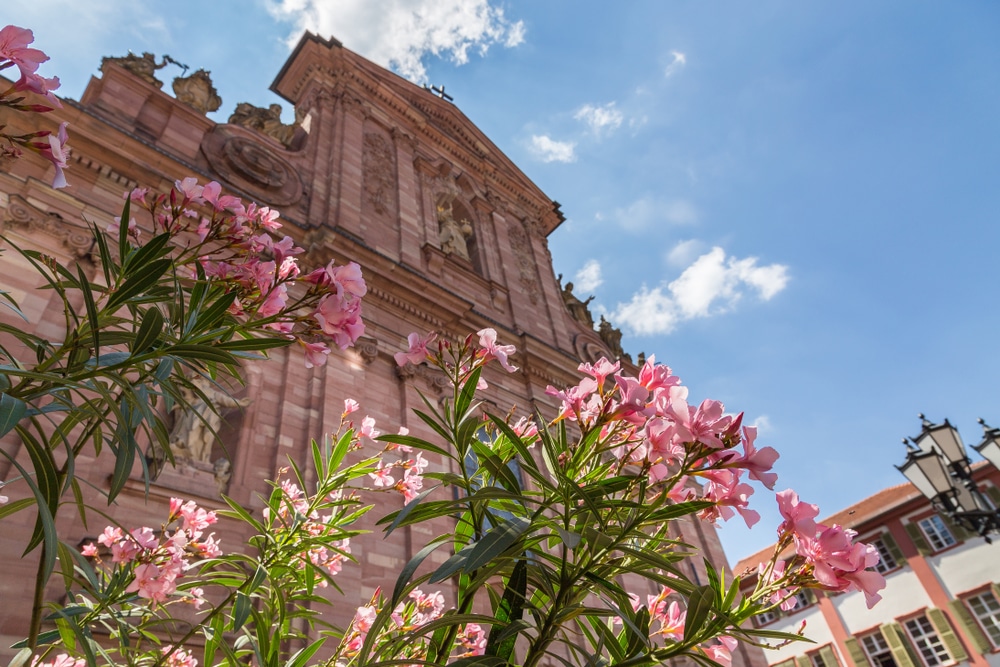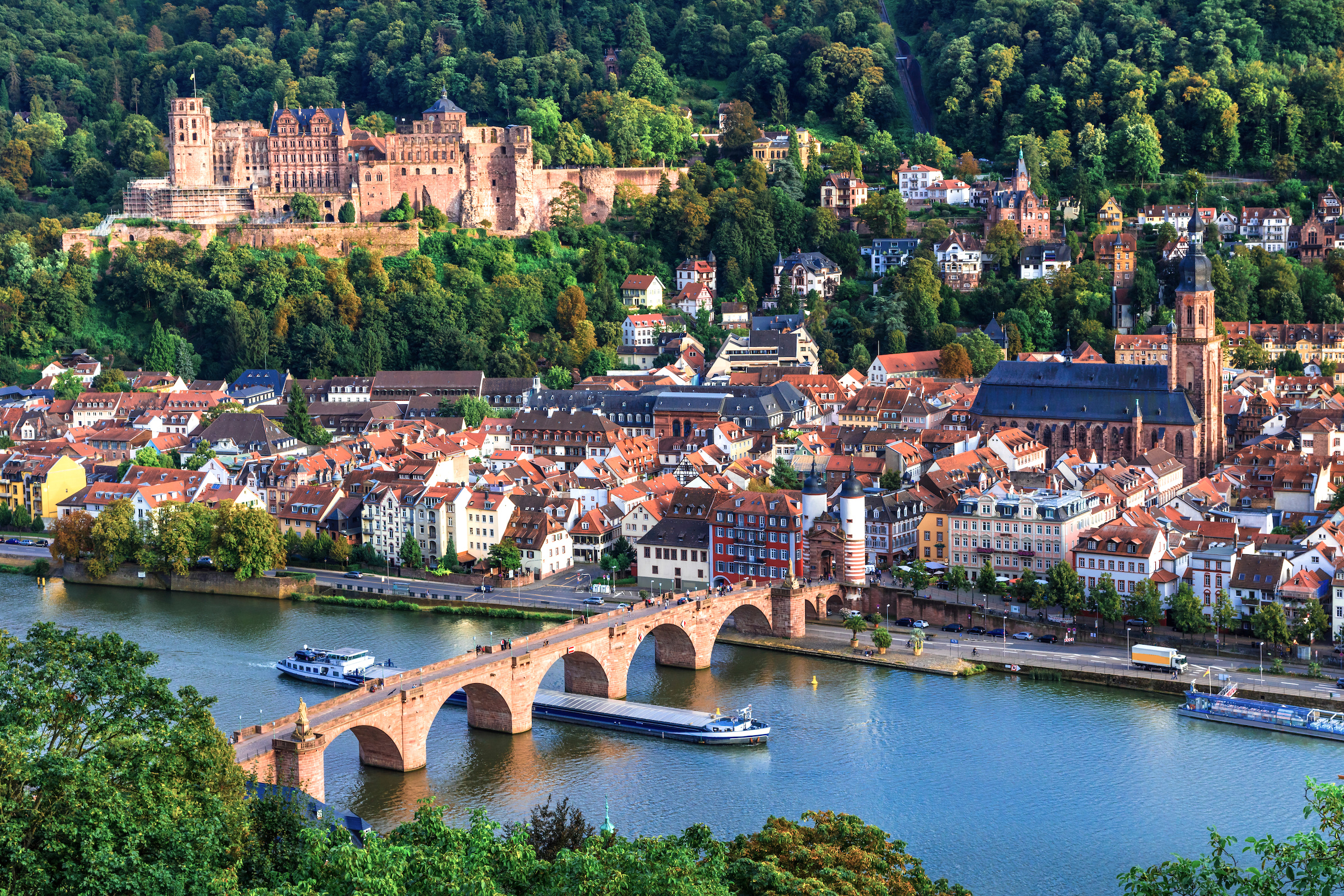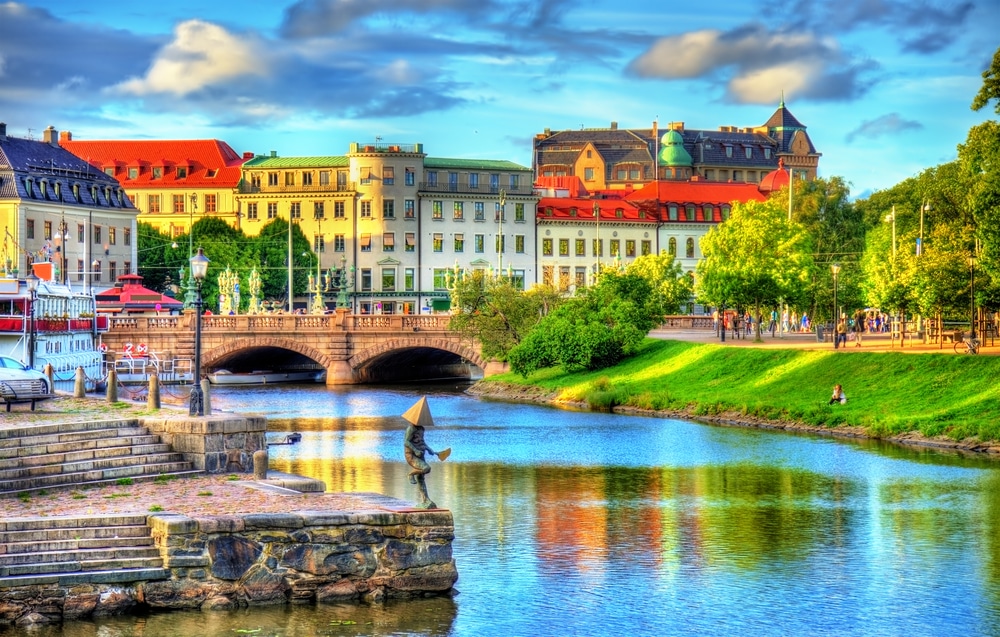- Home ›
- Germany ›
- Heidelberg
The Jesuit Church defines Heidelberg's old town quarter in its own way, as the building's elegant appearance makes it a unique beauty. Nevertheless, the largest Catholic church in Heidelberg also has a chequered history. For almost a generation it was only half-finished and was even used as a military hospital, and it took over a hundred years before the church tower was completed. After a complete renovation, in 2009 the Jesuit Church celebrated its completion 250 years ago and at the same time its consecration as a Catholic parish church 200 years ago.
Construction and completion
After the end of the Palatinate War of Succession, the whole of Heidelberg lay in ruins. Elector Johan Wilhelm observed an influx of believers to the Calvinists, so Jesuits were sent to the city on the Neckar. These were supposed to lead everyone back to the right faith and to deny the then reformatory Heiliggeistkirche its rank. In 1705 the Jesuit College was built from stones of the Thick Tower of the castle. A new church was to be built directly adjacent to the college, which is why the foundation stone of the Jesuit Church was laid on Easter Sunday 1712.
The mason Johann Adam Breunig brought a draft of the Schwetzingen Castle to Düsseldorf. As a reward he received from Elector Johann Wilhelm the order to build the church. Breunig designed a hall church with three naves and curved buttresses, using the Jesuit church Il Gesu in Rome as a model. When the Heidelberg church was just half completed, the Elector died. From then on, the roofed part of the Heidelberg Jesuit Church served as a makeshift building.
In 1749 Elector Carl Theodor continued the construction until it was completed in 1759. After the Jesuit order was dissolved in 1777, the building was converted into a military hospital in 1793. It was not until November 1, 1809 that it was consecrated as the only Catholic parish church in Heidelberg. It was not until 1872 that the building received its bell tower.
Baroque building
Today, the interior impresses with a lot of light, which is created by large windows. The baroque furnishings are no longer present. The richly decorated front façade has a Mediterranean effect, with the statue of Jesus in the middle. Elector Frederick the Victorious was buried in a crypt. The entrance to the former Jesuit College is to the east of the church portals. The former Jesuit facilities are now used by the university administration.
Overall, the building is unadorned. However, the incidence of light creates a special effect of the south-facing church interior.
The church now houses the Museum of Sacred Art and Liturgy, where visitors can view art from the 17th to 19th centuries. The exhibition, which includes a silver Madonna from 1735, is a documentation of the work of the Jesuits of the then Electoral Palatinate.




